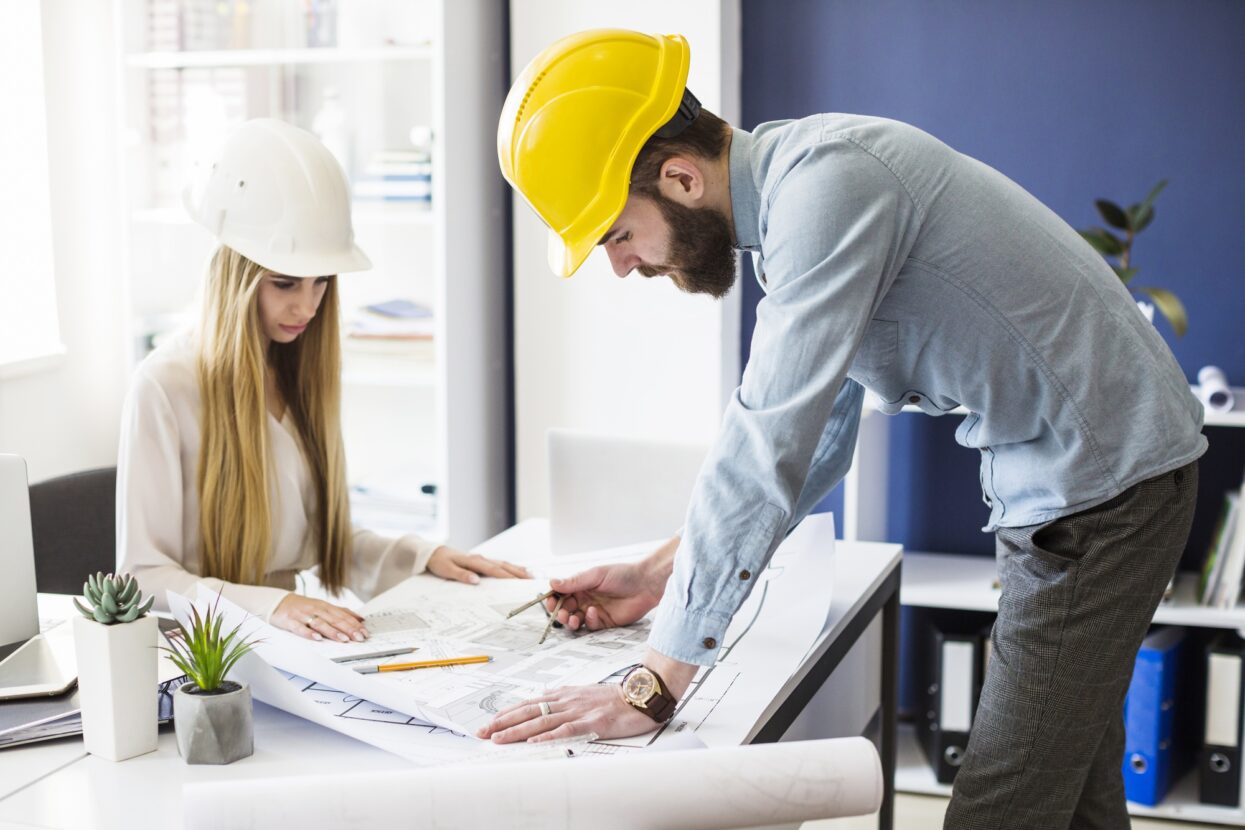In the world of construction, engineers and architects are like two sides of the same coin. Architects bring creativity, aesthetics, and vision to a project, while engineers ensure that the structure is safe, functional, and buildable. When these two professions work seamlessly together, magic happens. However, collaborating isn’t always smooth sailing. Miscommunication, conflicting priorities, and differing perspectives can turn what should be an exciting project into a frustrating one.
So, how can engineers and architects work better together? Here are some practical ways to bridge the gap and create a more effective, collaborative construction process
1. Start communicating early and keep at it
One of the biggest sources of conflict between architects and engineers is a lack of early communication. The best projects happen when both sides are involved from the start, working together to align their visions.
Tips for better communication:
- Regular meetings: Check-ins should occur regularly throughout the project (weekly or monthly), not just at important milestones.
- Speak each other’s language: Engineers should avoid overly technical jargon and instead provide clear examples and visuals to illustrate structural limitations so architects can better integrate them into their designs without sacrificing the aesthetics. Architects should clarify design intentions in a way that considers structural realities by being open to discussions about load-bearing requirements, material feasibility, and construction techniques. The more both sides can simplify their explanations, the easier it becomes to find mutually beneficial solutions.
- Use collaborative tools: BIM (Building Information Modeling) software, shared cloud platforms, and project management tools can keep everyone on the same page. Using synchronization plans with all installations and structural elements in one place is crucial to ensuring seamless coordination, minimizing conflicts, and enhancing efficiency throughout the construction process.
2. Embrace each other’s strengths
Engineers and architects have different but complementary skill sets. Rather than seeing each other as obstacles, the relationship should be viewed as a partnership.
Architects should trust engineers to refine their vision with structural feasibility in mind. A stunning design isn’t helpful if it can’t be built efficiently. Engineers should appreciate that architecture is about more than just function—good design impacts user experience, aesthetics, and even sustainability.
3. Solve problems together, not in isolation
It’s easy to fall into the trap of working solo — architects finalizing designs before engineers see them or engineers making structural changes without considering design intent, which may lead to frustration and unnecessary rework.
A better approach:
- Collaborate on problem-solving: If a structural issue arises, engineers and architects should brainstorm solutions together by using synchronisation plans, instead of working separately.
- Be open to compromise: The best solutions often come from a mix of both disciplines.
- Avoid finger-pointing: Instead of blaming the other side when issues arise, focus on finding solutions.
.
4. Get hands-on experience in each other’s world
A little empathy goes a long way. Architects should spend some time understanding engineering principles, and engineers should develop awareness about the architectural design processes.
Ways to gain perspective:
- Cross-disciplinary training: Attending workshops or courses outside their primary field may help architects and engineers gain insight into the ‘other side’ of the project.
- Job shadowing: Spending a day in the life of an engineer or architect may be useful to see their challenges firsthand. E.g. listening in an internal meeting of architects can help engineers better understand the architectural language, design intent, and decision-making process, fostering more effective collaboration and alignment between disciplines.
5. Use technology to bridge the gap
Technology can be a game-changer in fostering collaboration between architects and engineers.
Key tools to consider:
- BIM platforms: Software like Revit, Tekla, Allplan, AutoCAD and others enable both architects and engineers to work from a shared model, reducing misunderstandings and help spotting collisions early on.
- Project management tools: MS Project, Primavera, Trello, and such, can help keep track of responsibilities, deadlines, and changes.
- Virtual reality (VR) and 3D modeling: These tools allow both sides to visualize designs in real-time and make necessary adjustments before construction begins.
Conclusion
Collaboration between architects and engineers doesn’t have to be a struggle. By improving communication, respecting each other’s expertise, solving problems together, gaining hands-on experience, and leveraging technology, teams can create more seamless, innovative, and efficient construction projects.
At the end of the day, the goal is the same: to bring a project from paper (or screen) to life. And the better we work together, the more successful those projects will be.
OROOK greatly simplifies the entire career decision-making process, as well as the engagement of the right professionals for your project. We have also considered training programs that can help you enhance your skills and knowledge, making it even easier to find the right job.


